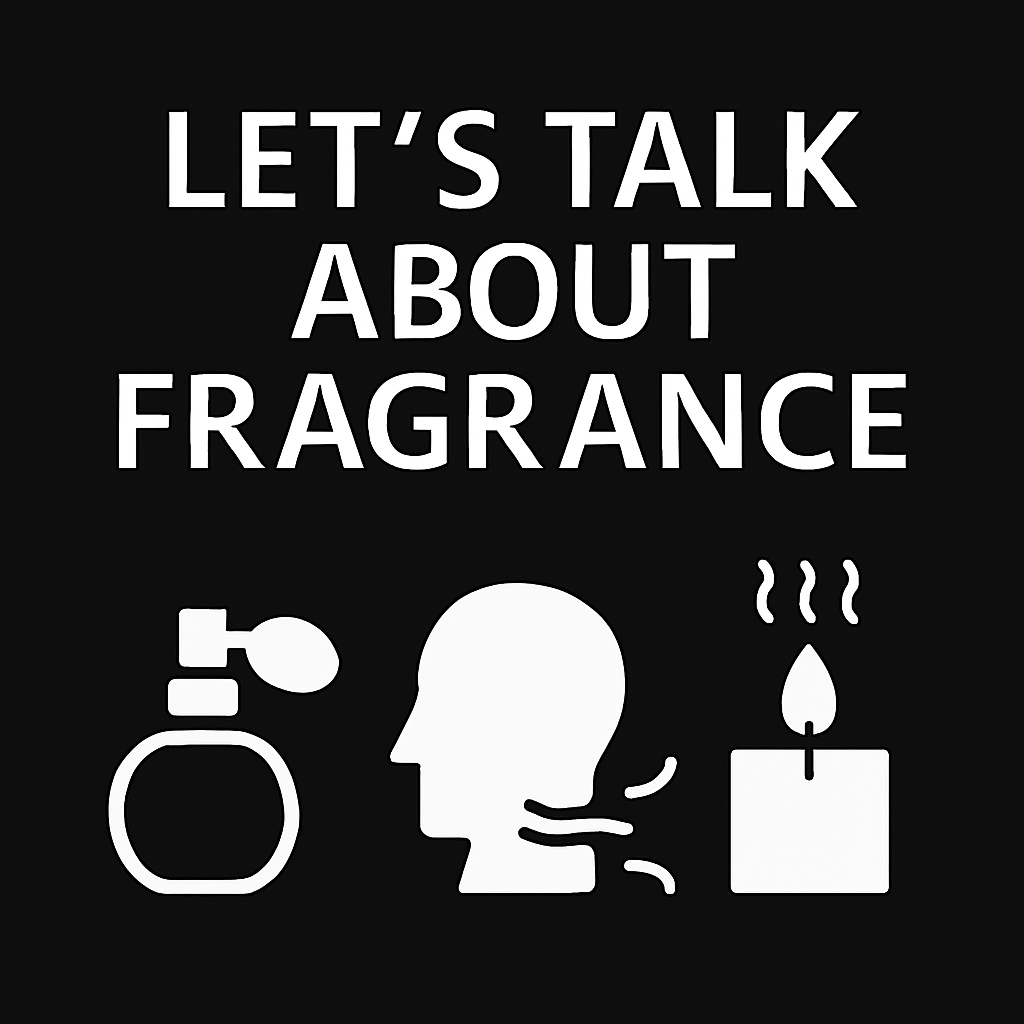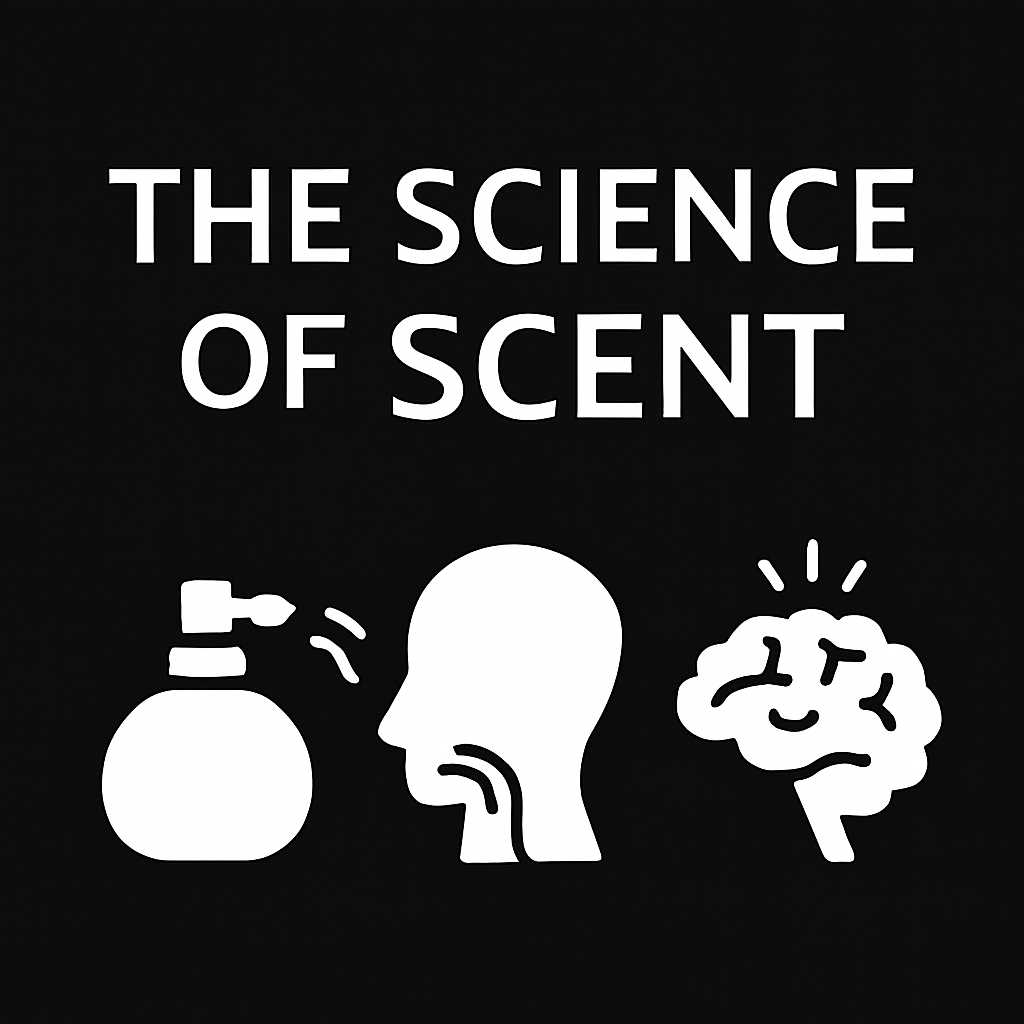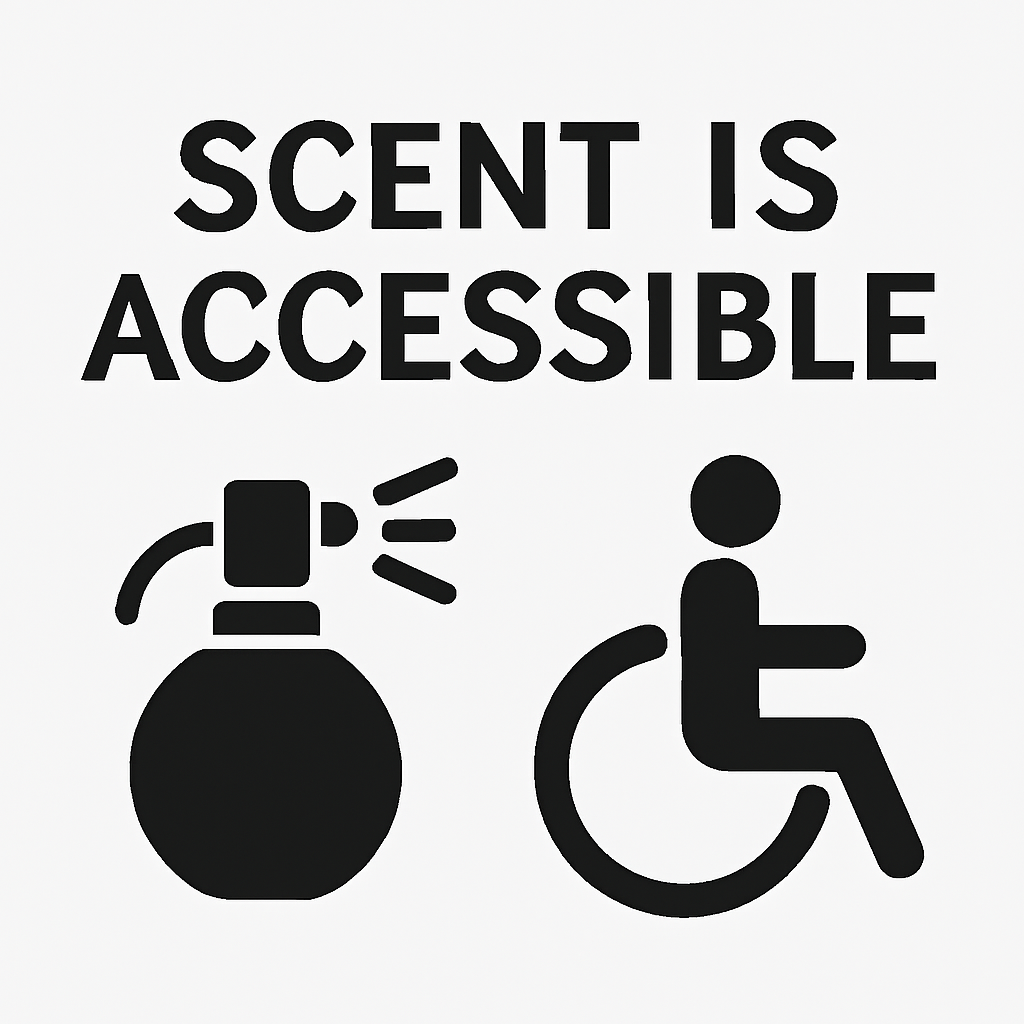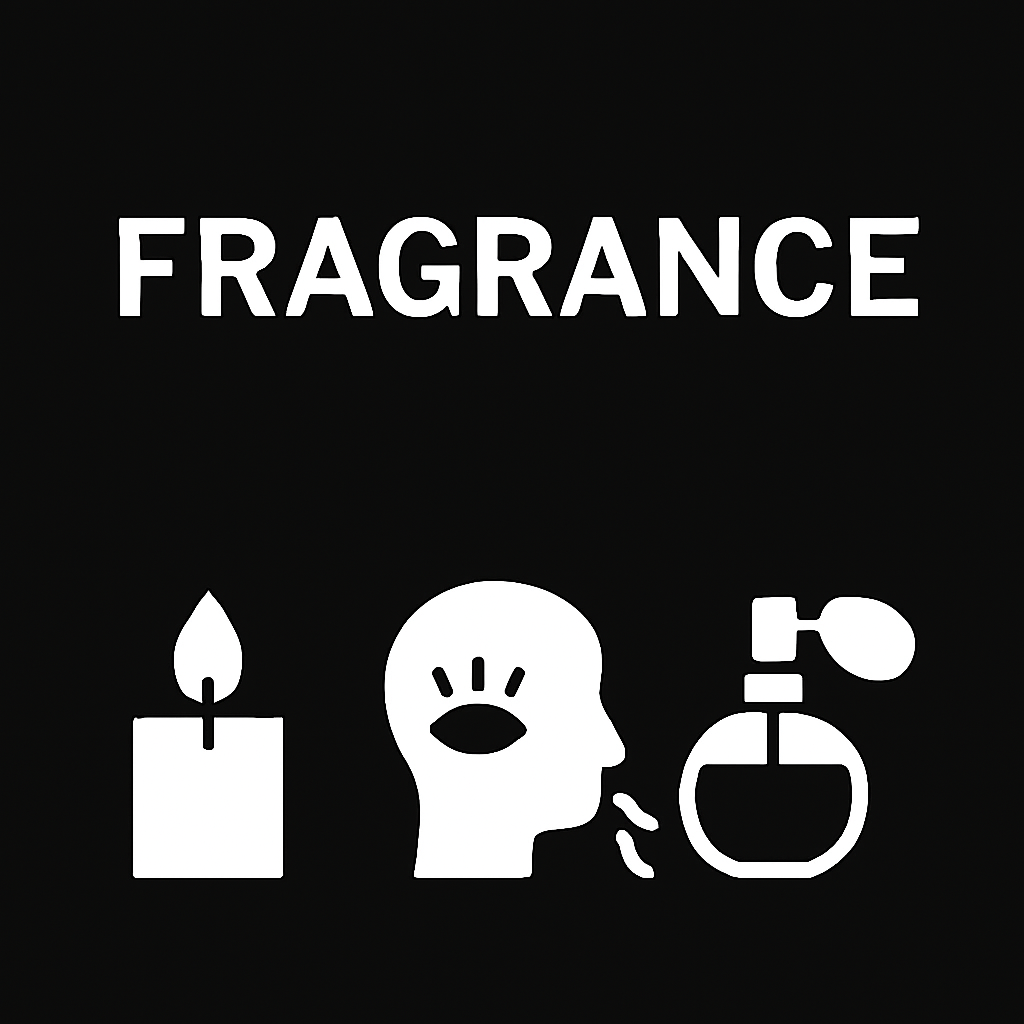
Smelling Psychology Of Fragrance Magical Identity
Scent As Emotional Architecture
Psychology Of Fragrance – The Mind Beneath The Perfume
Fragrance is a silent force that shapes how we feel, remember, and relate to the world. Unlike visual or auditory stimuli, scent travels directly to the limbic system, the brain’s emotional core. This neurological shortcut allows fragrance to bypass rational thought and trigger emotional responses with immediacy. From ancient incense rituals to modern perfumery, scent has always carried symbolic and emotional weight. In contemporary psychology, fragrance is studied for its ability to change, structure and, influence mood, and interpersonal dynamics. It plays a role in therapeutic environments, branding strategies, and personal identity formation. The psychology of fragrance reveals how scent operates as a silent architect of human experience, guiding emotional states and social interactions.

Emotional Activation – How Scent Modulates Feeling
Limbic Access – The Brain’s Shortcut To Emotion
Fragrance interacts with the limbic system, the brain’s emotional center, through direct olfactory pathways. This bypass of the neocortex allows scent to trigger emotional responses faster than sight or sound. Lavender is known to reduce anxiety by modulating GABA neurotransmission, while citrus oils elevate mood through dopaminergic stimulation. The emotional impact of scent varies by individual due to personal associations and cultural conditioning. Vanilla may evoke comfort for one person and artificiality for another. Fragrance intensity also affects emotional response; subtle scents soothe while overpowering ones may cause agitation. In therapeutic settings, scent is used to manage stress, depression, and trauma. Emotional resonance is a powerful trigger that heightens when scent is paired with context, such as memories. Designers use this knowledge to craft fragrances that evoke specific moods or atmospheres. Understanding emotional activation through scent allows for intentional mood regulation and psychological support.
| Fragrance Family | Emotional Effect | Common Use Case |
|---|---|---|
| Floral | Calming, romantic | Personal perfumes, spas |
| Citrus | Energizing, uplifting | Morning routines, offices |
| Woody | Grounding, reflective | Meditation, evening wear |
| Spicy | Stimulating, bold | Social events, nightlife |
| Aquatic | Refreshing, neutral | Unisex scents, minimalist |
Memory Encoding – Scent As A Mnemonic Device
Olfactory Recall – Unlocking The Past Through Smell
Smell is uniquely tied to autobiographical memory due to its direct connection to the hippocampus and amygdala. This neurological proximity allows scent to trigger vivid recollections with emotional intensity. The Proustian effect describes how a familiar smell can unlock long-forgotten memories. Fragrance brands often design scents that mimic nostalgic environments, such as fresh linen or baked goods. In clinical settings, scent is used to support memory retrieval in patients with dementia or PTSD. Personal scent archives—collections of fragrances tied to life events—serve as emotional anchors. These archives reinforce identity and provide continuity during life transitions. Memory encoding through scent is more durable than visual or auditory cues due to its emotional valence. Cultural rituals often use scent to mark significant events, embedding memory through olfactory symbolism. Understanding scent’s mnemonic power allows individuals to curate emotional landscapes through fragrance.
Fragrance And Memory – Key Insights
- Scent activates memory centers more directly than other senses
- Emotional memories tied to scent are more vivid and long-lasting
- Fragrance can support therapeutic recall in clinical settings
- Personal scent archives reinforce identity and emotional continuity
Scent And Attraction – Chemistry Beyond The Surface
Olfactory Cues – The Unspoken Language Of Desire
Fragrance plays a pivotal role in human attraction, often operating beneath conscious awareness. The human body naturally emits chemical signals known as pheromones, which can influence perceptions of compatibility and sexual interest. While synthetic perfumes do not contain pheromones, they can mimic or amplify these natural signals. Scents with musky, amber, or animalic notes are often associated with sensuality and physical intimacy. Cultural norms and personal preferences shape how these scents are interpreted, with some societies favoring sweet florals and others preferring earthy or spicy profiles. The context in which a fragrance is worn—such as a date, a party, or a professional setting—also affects its impact. Studies have shown that people rate others as more attractive when exposed to pleasant scents, even when visual cues remain constant. This suggests that olfactory perception can override or enhance physical appearance. Fragrance can also create a sense of mystery or allure, inviting others to come closer. In this way, scent becomes a tool for nonverbal communication in romantic and social dynamics.
| Scent Profile | Perceived Effect | Common Notes |
|---|---|---|
| Musky | Sensual, intimate | Musk, amber, civet |
| Floral | Romantic, approachable | Rose, jasmine, gardenia |
| Spicy | Bold, adventurous | Clove, cinnamon, cardamom |
| Woody | Mysterious, grounded | Sandalwood, cedar, vetiver |
| Gourmand | Indulgent, comforting | Vanilla, chocolate, caramel |
Identity Formation – Fragrance As Personal Signature
Scent Ownership – When Smell Becomes Self
Choosing a fragrance is often an act of self-definition, reflecting personality, values, and emotional tone. People gravitate toward scents that mirror their inner world—whether it’s the confidence of leather, the serenity of lavender, or the playfulness of citrus. Over time, a chosen fragrance becomes a personal signature, recognized by others and associated with one’s presence. This scent-based identity can be empowering, offering a sense of control over how one is perceived. Fragrance also evolves with life stages; individuals may shift from bright, youthful scents to deeper, more complex compositions as they mature. The act of applying perfume becomes ritualistic, reinforcing self-image and emotional readiness. In branding, companies use signature scents to create emotional continuity and customer loyalty. The psychology of scent ownership reveals how deeply people internalize olfactory identity. Fragrance becomes more than a product—it becomes a mirror of the self. This connection explains why people often feel emotionally attached to their favorite perfumes.
Fragrance And Identity – Key Insights
- Fragrance choices reflect personality traits and emotional states
- Signature scents become part of one’s social and personal identity
- Scent rituals reinforce self-perception and emotional readiness
- People often shift fragrance preferences across life stages
- Emotional attachment to fragrance mirrors attachment to self-image
Cultural Symbolism – Scent Across Civilizations
Ritual And Meaning – Fragrance As Collective Memory
Fragrance has long served as a cultural artifact, embedded in rituals, ceremonies, and symbolic practices. In ancient Egypt, incense was used to communicate with deities and purify sacred spaces. In India, sandalwood and jasmine are integral to religious offerings and spiritual ceremonies. In Japan, the art of Kōdō—“the way of incense”—elevates scent appreciation to a meditative discipline. Western traditions have used myrrh, frankincense, and rosewater in both religious and royal contexts. These practices reflect how scent encodes collective memory and shared values. Cultural preferences for certain fragrance families often stem from geography, climate, and historical trade routes. For example, Mediterranean cultures favor citrus and herbal notes, while Middle Eastern perfumery emphasizes oud and spice. Fragrance also plays a role in rites of passage, such as weddings, funerals, and coming-of-age rituals. Understanding the cultural symbolism of scent reveals how olfaction connects individuals to heritage, identity, and community.
| Culture/Region | Symbolic Scents | Traditional Use |
|---|---|---|
| Egypt | Myrrh, frankincense | Temples, embalming, offerings |
| India | Sandalwood, jasmine | Puja rituals, weddings |
| Japan | Aloeswood, incense | Kōdō ceremonies, meditation |
| Middle East | Oud, rose, saffron | Hospitality, religious events |
| Mediterranean | Citrus, herbs, olive | Daily hygiene, seasonal rituals |
Scent And Memory Disorders – Fragrance In Cognitive Therapy
Olfactory Stimulation – Rebuilding The Past Through Smell
Fragrance is increasingly used in therapeutic settings to support individuals with memory loss, dementia, or trauma. Because olfactory pathways connect directly to the hippocampus and amygdala, scent can trigger emotional and autobiographical memories even when verbal recall is impaired. In Alzheimer’s care, familiar scents such as lavender, cinnamon, or fresh-cut grass are used to evoke comforting memories and reduce agitation. Scent-based therapy can also help patients reorient in time and space by linking specific smells to daily routines or personal history. In trauma recovery, controlled exposure to certain scents can help desensitize emotional responses and facilitate healing. The effectiveness of olfactory stimulation depends on the individual’s scent history and emotional associations. Therapists often work with patients and families to identify meaningful scents from the person’s past. These scents are then integrated into sensory environments or memory boxes. The goal is not only to retrieve memories but to restore a sense of self and continuity. Fragrance thus becomes a bridge between past and present, memory and identity.
Fragrance In Cognitive Therapy – Key Applications
- Stimulates memory recall in dementia and Alzheimer’s patients
- Reduces anxiety and agitation through familiar, calming scents
- Supports trauma recovery via controlled olfactory exposure
- Enhances emotional connection in memory care environments
- Reinforces daily routines and spatial orientation through scent cues

Fragrance And Sleep – Scent As A Gateway To Rest
Olfactory Influence – Calming The Nervous System
Fragrance can significantly impact sleep quality by modulating the nervous system and promoting relaxation. Lavender is one of the most studied scents in sleep research, known for its ability to reduce heart rate and blood pressure. Chamomile and sandalwood also show sedative effects, helping individuals transition into deeper sleep stages. The mechanism involves olfactory stimulation of the parasympathetic nervous system, which counters stress and anxiety. Scented environments, such as bedrooms infused with essential oils, can condition the brain to associate specific smells with rest. This conditioning strengthens over time, creating a reliable cue for sleep onset. Fragrance also affects sleep architecture, with some studies showing increased slow-wave sleep in scented conditions. Sleep hygiene practices now often include olfactory elements, such as pillow sprays or diffuser rituals. The psychological impact of scent on sleep is both physiological and symbolic, reinforcing bedtime routines and emotional safety. Understanding fragrance as a sleep aid opens new avenues for non-pharmacological intervention.
| Scent Type | Sleep Benefit | Common Application |
|---|---|---|
| Lavender | Reduces anxiety | Pillow sprays, diffusers |
| Chamomile | Sedative effect | Herbal blends, sleep teas |
| Sandalwood | Lowers heart rate | Incense, nighttime perfumes |
| Bergamot | Eases tension | Evening rituals, bath oils |
| Vanilla | Comforting, soothing | Candles, body lotions |
Scent And Decision-Making – Fragrance As Cognitive Cue
Olfactory Priming – Guiding Choices Through Smell
Fragrance can subtly influence decision-making by priming emotional and cognitive responses. Pleasant scents have been shown to increase prosocial behavior, such as generosity and cooperation. In retail environments, ambient fragrance can affect how long customers stay and how much they spend. Citrus scents often signal cleanliness and freshness, leading to more favorable evaluations of products or spaces. Fragrance also impacts risk perception; calming scents may reduce anxiety and encourage more open-minded choices. In workplace settings, scent can enhance focus and reduce mental fatigue, indirectly shaping productivity and task completion. The psychological mechanism involves associative learning, where scent becomes linked to specific outcomes or expectations. This link can be exploited in marketing, education, and behavioral therapy. Fragrance thus becomes a cognitive guidance system. Understanding olfactory priming allows for more intentional use of scent in decision-making contexts.
Fragrance And Cognitive Influence – Key Insights
- Pleasant scents increase generosity and social cooperation
- Citrus notes enhance perceptions of cleanliness and freshness
- Calming scents reduce anxiety and support open-minded decisions
- Scent can improve focus and reduce mental fatigue in work environments
- Olfactory priming links fragrance to emotional and behavioral outcomes
Scent And Gender Identity – Fragrance As Expression
Olfactory Fluidity – Beyond Binary Aromatics
Fragrance has historically been marketed along gendered lines, with floral and sweet notes associated with femininity and woody or spicy notes linked to masculinity. However, contemporary perfumery is challenging these binaries by embracing olfactory fluidity. Unisex fragrances blend traditionally gendered notes to create inclusive scent profiles. This shift reflects broader cultural movements toward gender expression and identity autonomy. Individuals now choose fragrances based on mood, personality, or occasion rather than gender norms. The psychological impact of this shift is significant, allowing people to explore and affirm identity through scent. Fragrance becomes a tool for self-expression, not a label. Brands are responding by removing gendered language and offering customizable scent experiences. This evolution in fragrance psychology mirrors changes in fashion, language, and social structures. Understanding scent as a medium for gender expression expands its emotional and symbolic potential.
| Fragrance Category | Traditional Association | Contemporary Interpretation |
|---|---|---|
| Floral | Feminine | Romantic, soft, universal |
| Woody | Masculine | Grounded, introspective, neutral |
| Citrus | Feminine | Fresh, energetic, unisex |
| Spicy | Masculine | Bold, dynamic, inclusive |
| Aquatic | Neutral | Clean, minimalist, versatile |
Fragrance And Ritual – Scent As Emotional Anchor
Olfactory Continuity – Marking Time With Smell
Rituals often rely on scent to create emotional continuity and symbolic meaning. From lighting incense during meditation to applying perfume before a performance, fragrance marks transitions and reinforces intention. These olfactory rituals become embedded in memory, creating emotional anchors that stabilize mood and identity. The repetition of scent in specific contexts strengthens associative learning, making fragrance a reliable cue for emotional states. Ritual scents also serve as boundary markers between activities—work, rest, celebration, or reflection. In grief rituals, scent can provide comfort and connection to lost loved ones. In celebratory contexts, fragrance amplifies joy and presence. The psychological power of ritual scent lies in its ability to evoke emotion without words. Fragrance thus becomes a language of transition, continuity, and emotional depth. Understanding scent as ritual reveals its role in shaping personal and collective experience.
Fragrance And Ritual – Key Insights
- Scent marks emotional transitions and reinforces intention
- Ritual fragrance creates emotional anchors through repetition
- Olfactory cues stabilize mood and identity across contexts
- Scent rituals support grief, celebration, and reflection
- Fragrance operates as a symbolic language in ritual practice
Fragrance And Environment – Scent As Spatial Design
Olfactory Atmosphere – Shaping Space Through Smell
Fragrance is increasingly used in architectural and interior design to influence how people experience physical environments. Hotels, spas, and retail stores often deploy signature scents to create emotional ambiance and brand identity. These olfactory choices affect mood, perception of cleanliness, and even spatial memory. A well-scented space can feel more luxurious, intimate, or energizing depending on the fragrance profile. Designers use scent layering to guide movement—placing citrus near entrances and woody notes in quiet zones. In healthcare settings, calming scents reduce patient anxiety and improve satisfaction. Fragrance is sometimes added for emotional texture to visual art. The psychological impact of environmental fragrance lies in its ability to create immersive, multisensory experiences. Scent also affects time perception; pleasant smells can make spaces feel more welcoming and time spent more enjoyable. Understanding fragrance as spatial design reveals its power to shape emotional landscapes within built environments.
| Environment Type | Preferred Scent Profile | Emotional Impact |
|---|---|---|
| Hotel Lobby | Citrus, floral | Welcoming, fresh |
| Spa | Lavender, eucalyptus | Calming, restorative |
| Retail Store | Vanilla, sandalwood | Inviting, indulgent |
| Healthcare | Chamomile, mint | Soothing, clean |
| Gallery/Museum | Resin, incense | Reflective, immersive |
Scent And Seasonal Psychology – Fragrance Across Time
Olfactory Cycles – How Smell Mirrors The Calendar
Fragrance preferences often shift with the seasons, reflecting changes in mood, weather, and cultural rituals. In spring, people gravitate toward floral and green scents that evoke renewal and growth. Summer brings a preference for aquatic, citrus, and tropical notes that feel light and energizing. Autumn introduces spicy, woody, and gourmand fragrances that mirror the warmth and introspection of the season. Winter scents tend to be deeper and more comforting, with notes like amber, pine, and cinnamon. These seasonal shifts are not just aesthetic—they reflect psychological needs for stimulation, grounding, or emotional warmth. Fragrance marketers align product launches with seasonal trends, reinforcing emotional resonance. Individuals often build scent wardrobes that rotate with the calendar, using fragrance to mark time and mood. Seasonal scent rituals also connect people to cultural events, such as holidays or solstices. Understanding the psychology of seasonal fragrance reveals how scent helps us navigate emotional cycles throughout the year.
Seasonal Fragrance Psychology – Key Insights
- Spring scents evoke renewal, optimism, and freshness
- Summer fragrances energize and uplift with bright, tropical notes
- Autumn scents ground and comfort through spice and wood
- Winter fragrances soothe and deepen emotional introspection
- Seasonal scent rituals reinforce emotional and cultural continuity
Fragrance And Childhood Development – Scent As Early Experience
Olfactory Imprinting – Building Emotional Foundations
Fragrance plays a formative role in early childhood development, shaping emotional associations and sensory preferences. Infants respond to scent before they develop full visual or auditory recognition, relying on olfactory cues to identify caregivers and environments. The smell of a parent’s skin, home, or clothing becomes a source of comfort and security. These early scent associations are encoded deeply in memory and can influence preferences later in life. Childhood environments rich in positive olfactory stimuli—such as fresh air, baking, or flowers—can foster emotional resilience. Conversely, exposure to unpleasant or chaotic smells may contribute to stress or aversion. Educational settings sometimes use scent to create calm, focus, or routine, reinforcing behavioral patterns. Pediatric therapy may include olfactory elements to support emotional regulation and sensory integration. The psychological imprint of childhood scent experiences often resurfaces in adulthood, shaping identity and emotional response. Understanding fragrance in early development reveals its foundational role in emotional architecture.
| Development Stage | Scent Role | Emotional Outcome |
|---|---|---|
| Infancy | Caregiver recognition | Security, bonding |
| Toddlerhood | Environmental imprinting | Comfort, familiarity |
| Early Childhood | Routine reinforcement | Emotional regulation |
| School Age | Learning association | Focus, calm |
| Adolescence | Identity exploration | Preference formation |
Scent And Creativity – Fragrance As Cognitive Catalyst
Olfactory Stimulation – Unlocking Imagination Through Smell
Fragrance can enhance creative thinking by stimulating emotional and sensory pathways linked to imagination. Scents like peppermint and rosemary are known to increase alertness and mental clarity, supporting idea generation. Floral and citrus notes may evoke playfulness and openness, encouraging divergent thinking. The limbic system’s activation through scent creates emotional resonance, which fuels symbolic and metaphorical thought. Artists, writers, and designers often use fragrance to set mood or trigger inspiration. Scent rituals—such as lighting incense before painting or applying perfume before writing—can condition the brain for creative flow. Fragrance also supports memory recall, which is essential for associative creativity. In group settings, ambient scent can foster collaborative energy and reduce performance anxiety. The psychological link between scent and creativity is both emotional and cognitive, rooted in sensory integration. Understanding fragrance as a creative catalyst opens new pathways for artistic and intellectual exploration.
Fragrance And Creativity – Key Insights
- Peppermint and rosemary is said to enhance alertness and mental clarity
- Citrus and floral scents evoke openness and imaginative play
- Scent rituals condition the brain for creative flow
- Olfactory stimulation supports associative and symbolic thinking
- Fragrance reduces anxiety and fosters collaborative energy in creative settings
Fragrance And Empathy – Scent As Emotional Synchronization
Olfactory Mirroring – Shared Feelings Through Smell
Fragrance can foster empathy by aligning emotional states between individuals in shared environments. When people are exposed to the same scent, their physiological responses often synchronize, creating a subtle emotional cohesion. This phenomenon is observed in group therapy, where calming scents help participants feel safer and more connected. In social psychology, scent is considered a nonverbal cue that can influence group dynamics and emotional contagion. Pleasant ambient fragrance can reduce interpersonal tension and increase openness in conversation. Shared olfactory experiences—such as communal rituals or cultural ceremonies—create emotional bonds that transcend language. Fragrance also plays a role in caregiving, where familiar scents can comfort both the caregiver and the recipient. In romantic relationships, scent memory reinforces emotional intimacy and mutual understanding. The psychological mechanism involves associative learning and limbic resonance, where scent becomes a shared emotional reference point. Understanding fragrance as a tool for empathy reveals its capacity to harmonize emotional landscapes across individuals.
| Context | Shared Scent Role | Emotional Outcome |
|---|---|---|
| Group Therapy | Calming, grounding | Safety, openness |
| Romantic Relationships | Intimate, familiar | Bonding, emotional recall |
| Cultural Ceremonies | Symbolic, collective | Unity, shared memory |
| Caregiving | Comforting, nostalgic | Trust, emotional regulation |
| Social Gatherings | Inviting, ambient | Connection, reduced tension |
Scent And Anxiety – Fragrance As Emotional Regulation
Olfactory Soothing – Calming The Mind Through Smell
Fragrance is widely used to manage anxiety by modulating the autonomic nervous system and emotional response. Essential oils like lavender, bergamot, and frankincense have been shown to reduce cortisol levels and promote relaxation. The mechanism involves olfactory stimulation of the limbic system, which governs fear and stress responses. Scent-based interventions are used in clinical settings, meditation practices, and personal rituals to create emotional safety. Fragrance can also interrupt anxious thought loops by redirecting attention to sensory experience. The act of applying or inhaling a calming scent becomes a grounding technique, reinforcing presence and control. In cognitive behavioral therapy, scent is sometimes paired with affirmations or visualization to enhance emotional resilience. Fragrance also supports sleep, which can help with anxiety management. The psychological impact of scent on anxiety is both immediate and cumulative, building emotional stability over time. Understanding fragrance as a tool for emotional regulation offers non-invasive support for mental health.
Fragrance And Anxiety Relief – Key Insights
- Lavender and bergamot reduce cortisol and promote calm
- Scent interrupts anxious thought loops through sensory redirection
- Olfactory rituals reinforce emotional safety and presence
- Fragrance supports sleep hygiene and emotional recovery
- Scent-based therapy enhances resilience in anxiety treatment
Fragrance And Grief – Scent As Emotional Remembrance
Olfactory Mourning – Holding Memory Through Smell
Fragrance plays a quiet but powerful role in the grieving process, offering emotional continuity and symbolic connection to those who have passed. The scent of a loved one’s clothing, home, or favorite perfume can evoke memories that feel immediate and intimate. These olfactory triggers often provide comfort, grounding the bereaved in shared experiences and emotional warmth. In memorial rituals, fragrance is used to honor the dead and create sacred space—incense, flowers, and candles carry symbolic weight. Grief therapists sometimes incorporate scent into healing practices, using familiar aromas to support emotional processing. The psychological mechanism involves limbic activation, where scent bypasses rational thought and accesses emotional memory directly. Fragrance can also help regulate the intensity of grief, offering moments of peace or reflection. Some people create scent memorials—preserving a loved one’s fragrance or wearing it during anniversaries. These rituals reinforce emotional bonds and provide a sense of presence amid absence. Understanding fragrance in grief reveals its role as a vessel for memory, emotion, and healing.
| Grief Context | Scent Role | Emotional Function |
|---|---|---|
| Memorial Rituals | Incense, floral oils | Honor, sacred space |
| Personal Belongings | Clothing, perfume | Comfort, emotional recall |
| Therapy Sessions | Familiar scents | Processing, grounding |
| Anniversaries | Signature fragrance | Connection, remembrance |
| Home Environment | Ambient scent | Stability, emotional safety |
Scent And Learning – Fragrance As Cognitive Anchor
Olfactory Encoding – Enhancing Recall Through Smell
Fragrance can support learning and memory retention by creating strong sensory associations with information. When a specific scent is present during study and again during recall, the brain uses olfactory cues to access stored knowledge. This phenomenon is known as context-dependent memory, and it has been observed in both academic and therapeutic settings. Peppermint and rosemary are particularly effective in enhancing alertness and cognitive performance. Scented environments can reduce stress and improve focus, making them ideal for classrooms, libraries, or study rituals. The act of pairing fragrance with learning material creates a multisensory experience that deepens engagement. In language learning, scent can be used to reinforce vocabulary tied to cultural or emotional themes. The psychological benefit lies in the integration of emotion, attention, and sensory input. Understanding fragrance as a cognitive anchor offers new strategies for education and personal development.
Fragrance And Learning – Key Insights
- Context-dependent memory links scent to information recall
- Peppermint and rosemary enhance focus and alertness
- Scented environments reduce stress and improve study engagement
- Fragrance rituals support consistent learning routines
- Olfactory cues deepen emotional and cultural connections in education
Fragrance And Aging – Scent Across The Lifespan
Olfactory Evolution – Changing Preferences Over Time
Fragrance preferences evolve with age, reflecting shifts in emotional needs, sensory sensitivity, and identity. Younger individuals often gravitate toward bright, playful scents like citrus, fruit, or sweet florals. As people mature, they may prefer deeper, more complex compositions such as woods, spices, or resins. Aging also affects olfactory sensitivity, with some individuals experiencing reduced scent perception or altered preferences. Fragrance can support emotional well-being in older adults by reinforcing memory, identity, and sensory pleasure. In elder care, scent is used to create comforting environments and support cognitive engagement. Personal scent archives become more meaningful with age, serving as emotional touchstones. Fragrance also plays a role in legacy—passing down perfumes or scent rituals to younger generations. Understanding olfactory evolution across the lifespan reveals how fragrance adapts to emotional and physiological change.
| Age Group | Preferred Scent Profile | Emotional Function |
|---|---|---|
| Adolescents | Fruity, sweet, playful | Exploration, identity |
| Young Adults | Citrus, floral, fresh | Energy, social connection |
| Middle Age | Woody, spicy, complex | Depth, introspection |
| Older Adults | Resinous, nostalgic | Comfort, memory recall |
| Elder Care | Familiar, calming | Stability, emotional safety |
Scent And Spirituality – Fragrance As Sacred Medium
Olfactory Transcendence – Connecting To The Divine
Fragrance has long been used in spiritual practices to facilitate transcendence, meditation, and connection to the sacred. Incense, essential oils, and natural resins are common in rituals across cultures, from Buddhist temples to Catholic cathedrals. These scents are believed to purify space, elevate consciousness, and invite divine presence. The psychological effect involves calming the nervous system and focusing attention, creating a receptive state for spiritual experience. Scent also marks sacred time, distinguishing ritual from ordinary life. In personal spiritual practice, fragrance may be used to set intention, invoke memory, or deepen meditation. The symbolic meaning of scent varies—frankincense for prayer, sandalwood for grounding, rose for compassion. Olfactory rituals create emotional resonance, reinforcing spiritual identity and continuity. Fragrance becomes a bridge between the material and the metaphysical, anchoring the unseen in sensory experience. Understanding scent as a sacred medium reveals its role in emotional and spiritual transformation.
Fragrance And Spiritual Practice – Key Insights
- Incense and oils purify space and elevate consciousness
- Scent marks sacred time and ritual boundaries
- Olfactory stimulation supports meditation and intention-setting
- Symbolic scents reinforce spiritual identity and emotional depth
- Fragrance bridges material experience with metaphysical connection

Fragrance And Intuition – Scent As Subconscious Signal
Olfactory Instinct – Reading The Room Without Words
Fragrance can influence intuitive judgments by shaping how we perceive people, spaces, and situations. Subtle olfactory cues often inform our gut reactions before conscious thought catches up. A pleasant scent may lead us to trust someone more, while an off-putting odor can trigger caution or withdrawal. These responses are rooted in evolutionary biology, where scent signaled safety, danger, or compatibility. Understanding fragrance as a subconscious signal reveals how scent shapes our instincts and interpersonal awareness.
| Scenario | Scent Cue | Intuitive Response |
|---|---|---|
| Job Interview | Clean, subtle cologne | Trust, professionalism |
| Hospital Visit | Antiseptic, sterile | Alertness, vulnerability |
| First Date | Warm, musky perfume | Attraction, curiosity |
| Public Transport | Body odor, smoke | Discomfort, avoidance |
| Nature Walk | Pine, earth, rain | Calm, openness |
Fragrance And Motivation – Scent As Performance Enhancer
Olfactory Drive – Energizing The Will To Act
Fragrance can serve as a motivational tool by stimulating alertness, focus, and emotional readiness. Scents like peppermint, lemon, and eucalyptus are known to activate the sympathetic nervous system, increasing energy and drive. Athletes and performers often use scent rituals to prepare mentally before competition or presentation. The act of applying a specific fragrance can become a psychological trigger for confidence and action. Understanding fragrance as a motivator reveals its potential to prime the mind for achievement.
Fragrance And Motivation – Key Insights
- Peppermint and lemon stimulate alertness and physical energy
- Scent rituals can anchor performance readiness and confidence
- Fragrance helps transition from rest to action-oriented states
- Olfactory cues support focus and reduce procrastination
- Scent can reinforce goal-oriented behavior through repetition
Fragrance And Social Memory – Scent As Collective Recall
Olfactory Landmarks – Shared History In The Air
Fragrance contributes to collective memory by embedding itself in cultural and generational experiences. The smell of old books, vinyl records, or school hallways can evoke shared nostalgia. These scents become olfactory landmarks, linking individuals to a common past. In national or regional identity, certain smells—like eucalyptus in Australia or jasmine in the Middle East—carry symbolic weight. Understanding fragrance as social memory reveals how scent binds communities through time.
| Cultural Memory | Iconic Scent | Shared Association |
|---|---|---|
| School Days | Chalk, paper, polish | Learning, childhood |
| National Identity | Eucalyptus, gum trees | Landscape, belonging |
| Holidays | Cinnamon, pine, cloves | Family, tradition |
| Urban Life | Asphalt, coffee, smoke | Movement, routine |
| Historical Sites | Dust, stone, incense | Heritage, reverence |
Fragrance And Technology – Scent In The Digital Age
Olfactory Innovation – Engineering Emotion Through Code
Technology is reshaping how we experience and interact with fragrance, from AI-generated perfumes to scent-enabled virtual reality. Digital scent delivery systems are being developed to enhance immersion in gaming, therapy, and remote communication. Smart diffusers now allow users to program scent cycles that align with mood, time of day, or activity. Fragrance is also being integrated into wearable tech, offering personalized emotional support through scent. Understanding fragrance in the digital age reveals how olfaction is becoming programmable, adaptive, and interactive.
Fragrance And Technology – Key Insights
- AI is used to design personalized, data-driven fragrances
- Digital scent devices enhance immersion in VR and remote experiences
- Smart diffusers align scent with mood, time, or activity
- Wearable scent tech supports emotional regulation on the go
- Fragrance is becoming a programmable layer of digital experience
Fragrance And Memory Preservation – Scent As Legacy
Olfactory Archives – Passing Down Invisible Stories
Fragrance can serve as a form of legacy, preserving emotional narratives across generations. Heirloom perfumes, family recipes, and traditional rituals carry scent memories that outlive their originators. These olfactory artifacts become vessels of identity, culture, and personal history. In memory preservation projects, scent is used to document life stories and evoke intergenerational connection. Understanding fragrance as legacy reveals its role in storytelling, inheritance, and emotional continuity.
| Legacy Medium | Scent Element | Memory Preserved |
|---|---|---|
| Heirloom Perfume | Signature fragrance | Personal identity |
| Family Recipes | Spices, herbs, baking | Cultural tradition |
| Ritual Objects | Incense, oils | Spiritual lineage |
| Letters and Keepsakes | Scented paper, sachets | Emotional presence |
| Home Spaces | Furniture, textiles | Domestic memory |
Fragrance And Self-Care – Scent As Personal Sanctuary
Olfactory Nourishment – Healing Through Sensory Ritual
Fragrance is a cornerstone of self-care, offering emotional nourishment through sensory pleasure and ritual. Applying perfume, lighting a candle, or using essential oils can become acts of self-affirmation and grounding. These rituals help regulate mood, reduce stress, and create boundaries between work and rest. Fragrance also enhances body awareness, encouraging presence and self-connection. Understanding scent in self-care reveals its role in emotional hygiene and personal empowerment.
Fragrance And Self-Care – Key Insights
- Scent rituals support emotional regulation and daily transitions
- Fragrance enhances body awareness and self-connection
- Olfactory pleasure reinforces self-worth and calm
- Scented environments create personal sanctuaries for rest and reflection
- Fragrance is a tool for emotional hygiene and resilience
Fragrance And Memory Architecture – Designing With Scent
Olfactory Mapping – Building Emotional Topographies
Fragrance can be used to map emotional experiences across time and space, creating a personal archive of scent-linked memories. By assigning specific scents to events, places, or goals, individuals can build a sensory timeline. This practice enhances emotional awareness and supports intentional living. Designers and therapists use scent mapping to help clients visualize emotional patterns and transitions. Understanding fragrance as memory architecture reveals its potential for self-reflection and narrative design.
| Scent Anchor | Emotional Context | Memory Function |
|---|---|---|
| New Job | Fresh citrus | Motivation, new beginnings |
| Breakup | Smoky incense | Closure, transformation |
| Travel | Oceanic or herbal | Exploration, freedom |
| Milestone Event | Floral bouquet | Celebration, pride |
| Recovery | Lavender or chamomile | Healing, resilience |
Fragrance And Emotional Intelligence – Scent As Awareness Tool
Olfactory Literacy – Reading Feelings Through Smell
Fragrance can support emotional intelligence by helping individuals recognize and regulate their own emotional states. Scented environments provide cues that can help with emotional awareness. People who use fragrance intentionally often develop greater sensitivity to mood shifts and interpersonal dynamics. This awareness can improve empathy, communication, and self-regulation. Understanding fragrance as an emotional intelligence tool reveals its subtle role in shaping psychological insight.
| Emotional Skill | Scent Application | Psychological Benefit |
|---|---|---|
| Self-Awareness | Personal scent rituals | Mood recognition |
| Empathy | Shared ambient fragrance | Emotional resonance |
| Regulation | Calming essential oils | Stress reduction |
| Social Skills | Scent in group settings | Connection, openness |
| Motivation | Energizing scents | Drive, focus |
Fragrance And Resilience – Scent As Recovery Strategy
Olfactory Grounding – Rebuilding Strength Through Smell
Fragrance can aid emotional recovery by offering sensory grounding during periods of stress, loss, or transition. Calming scents like vetiver, neroli, and chamomile help stabilize mood and promote inner strength. Scent rituals provide structure and continuity, reinforcing resilience through repetition. Fragrance also supports post-traumatic growth by anchoring new emotional narratives. Understanding scent as a recovery strategy reveals its role in healing and emotional renewal.
Fragrance And Resilience – Key Insights
- Calming scents stabilize mood and reduce emotional volatility
- Scent rituals reinforce structure and emotional continuity
- Fragrance supports post-traumatic growth and narrative rebuilding
- Olfactory grounding enhances inner strength and presence
- Scent becomes a tool for emotional renewal and recovery
Fragrance And Intimacy – Scent As Emotional Closeness
Olfactory Bonding – Deepening Connection Through Smell
Fragrance strengthens intimacy by creating emotional associations between people in close relationships. Shared scent experiences—such as a partner’s perfume or a home’s ambient fragrance—become part of relational memory. These olfactory bonds reinforce trust, comfort, and emotional depth. Fragrance also plays a role in physical closeness, enhancing attraction and sensory pleasure. Understanding scent as intimacy reveals its power to deepen emotional connection.
| Relationship Type | Scent Role | Emotional Function |
|---|---|---|
| Romantic Partners | Signature perfume | Desire, familiarity |
| Family | Home scent, cooking | Comfort, bonding |
| Friendship | Shared rituals | Trust, emotional recall |
| Caregiving | Soothing oils | Safety, empathy |
| Long-Distance | Scented keepsakes | Presence, memory |

Fragrance And Imagination – Scent As Storytelling
Olfactory Narrative – Building Worlds Through Smell
Fragrance fuels imagination by evoking places, emotions, and characters through scent. Writers, filmmakers, and designers use olfactory cues to deepen narrative immersion. Scents like leather, smoke, or citrus can suggest time periods, moods, or cultural settings. Personal scent rituals also support creative visualization and emotional storytelling. Understanding fragrance as narrative reveals its role in shaping symbolic and imaginative experience.
Fragrance And Storytelling – Key Insights
- Scent evokes place, time, and emotional tone in narrative design
- Writers and artists use fragrance to deepen immersion and symbolism
- Olfactory rituals support creative visualization and emotional flow
- Fragrance enhances character and setting in storytelling mediums
- Scent becomes a symbolic layer of imaginative experience
Fragrance And Disability – Scent As Sensory Inclusion
Olfactory Access – Designing For Diverse Sensory Needs
Fragrance can support people with disabilities by offering nonverbal emotional cues, sensory grounding, and environmental orientation. For individuals with visual impairments, scent provides spatial markers and emotional context in unfamiliar environments. In neurodivergent communities, fragrance is used to regulate sensory input, reduce anxiety, and support routine. Inclusive fragrance design considers sensitivity thresholds, scent-free zones, and customizable olfactory experiences. Understanding fragrance in disability contexts reveals its potential as a tool for accessibility, autonomy, and emotional support.
| Disability Context | Fragrance Role | Support Function |
|---|---|---|
| Visual Impairment | Spatial scent markers | Orientation, familiarity |
| Autism Spectrum | Calming scent rituals | Sensory regulation, routine |
| Chronic Pain | Aromatherapy interventions | Distraction, emotional relief |
| Mobility Limitations | Ambient scent environments | Comfort, mood enhancement |
| Chemical Sensitivity | Scent-free design | Safety, inclusion |
Conclusion – The Invisible Architecture Of Emotion
Fragrance is not merely a cosmetic flourish—it is a psychological instrument that shapes how we feel, remember, and relate to the world. From emotional regulation to memory preservation, scent operates as a silent architect of human experience. Its influence spans identity, creativity, intimacy, and resilience, offering tools for healing, connection, and transformation. As we move through life, fragrance marks our emotional landscapes with invisible precision. Understanding the psychology of fragrance invites us to live more intentionally, more sensorially, and more deeply attuned to the world within and around us.
Join The Discussion – What Does Fragrance Mean To You
How does fragrance shape your identity, relationships, or creativity? What scents define your seasons, your stories, your sanctuary?
#FragrancePsychology #OlfactoryMemory #ScentAndEmotion #InvisibleArchitecture #EmotionalDesign #SensoryStorytelling #FragranceAndIdentity #ScentRituals #OlfactoryHealing #FragranceAndCulture






